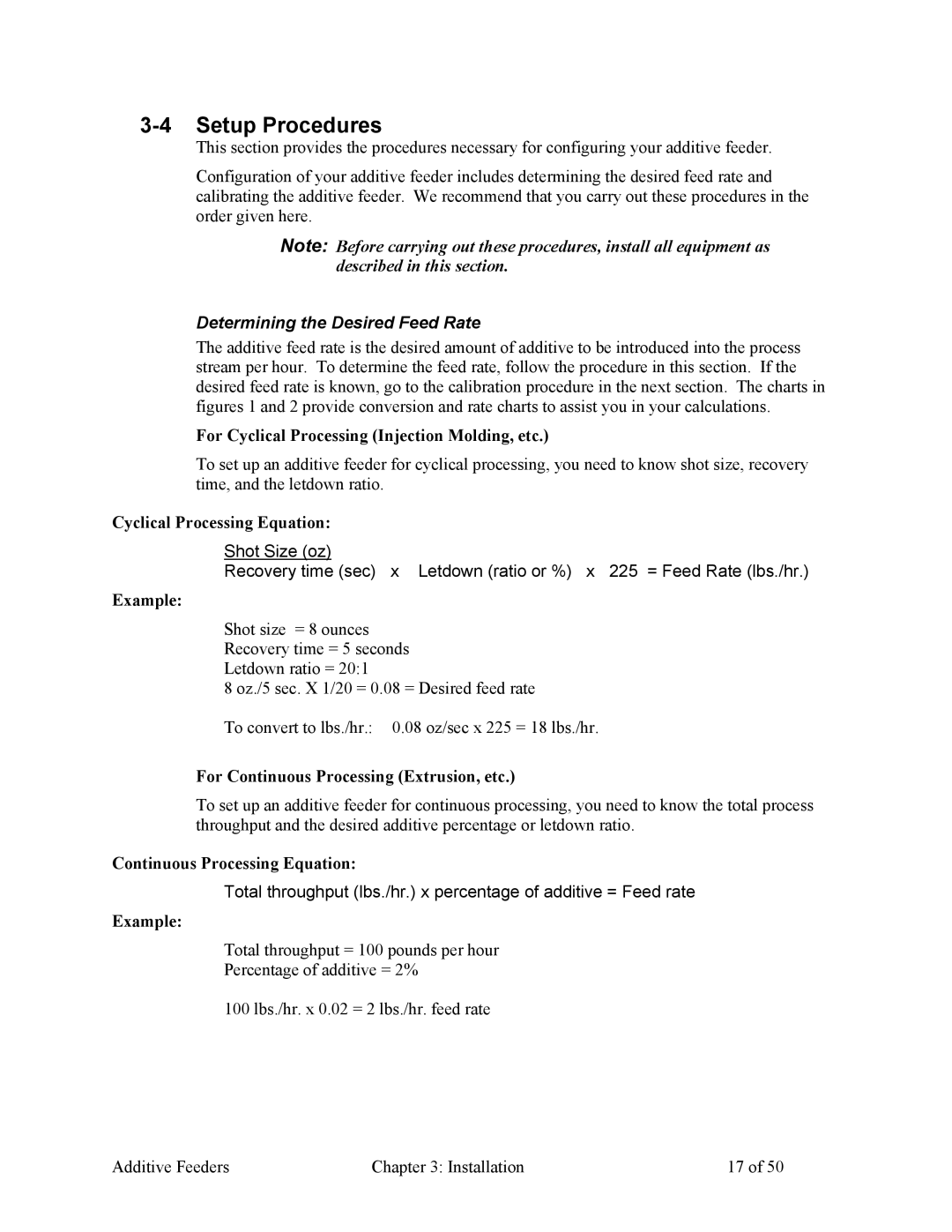3-4 Setup Procedures
This section provides the procedures necessary for configuring your additive feeder.
Configuration of your additive feeder includes determining the desired feed rate and calibrating the additive feeder. We recommend that you carry out these procedures in the order given here.
Note: Before carrying out these procedures, install all equipment as described in this section.
Determining the Desired Feed Rate
The additive feed rate is the desired amount of additive to be introduced into the process stream per hour. To determine the feed rate, follow the procedure in this section. If the desired feed rate is known, go to the calibration procedure in the next section. The charts in figures 1 and 2 provide conversion and rate charts to assist you in your calculations.
For Cyclical Processing (Injection Molding, etc.)
To set up an additive feeder for cyclical processing, you need to know shot size, recovery time, and the letdown ratio.
Cyclical Processing Equation:
Shot Size (oz)
Recovery time (sec) x Letdown (ratio or %) x 225 = Feed Rate (lbs./hr.)
Example:
Shot size = 8 ounces Recovery time = 5 seconds Letdown ratio = 20:1
8 oz./5 sec. X 1/20 = 0.08 = Desired feed rate
To convert to lbs./hr.: 0.08 oz/sec x 225 = 18 lbs./hr.
For Continuous Processing (Extrusion, etc.)
To set up an additive feeder for continuous processing, you need to know the total process throughput and the desired additive percentage or letdown ratio.
Continuous Processing Equation:
Total throughput (lbs./hr.) x percentage of additive = Feed rate
Example:
Total throughput = 100 pounds per hour
Percentage of additive = 2%
100 lbs./hr. x 0.02 = 2 lbs./hr. feed rate
Additive Feeders | Chapter 3: Installation | 17 of 50 |
